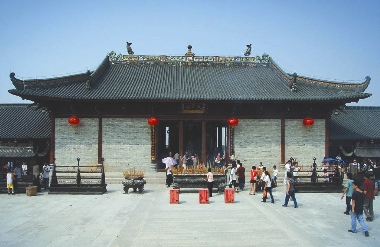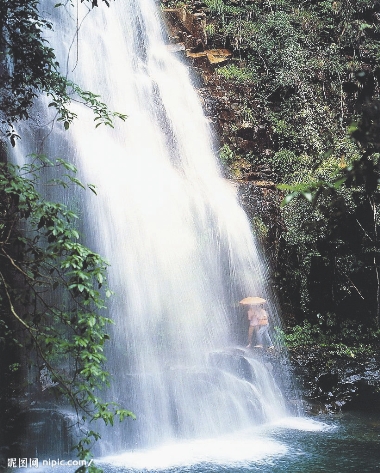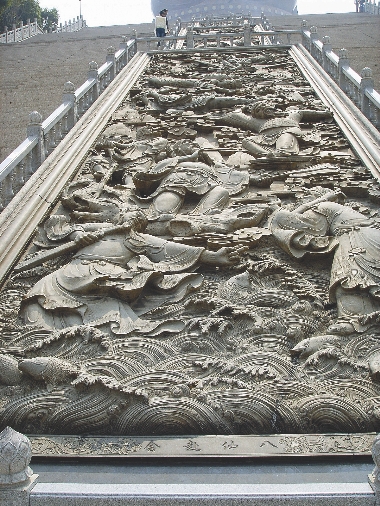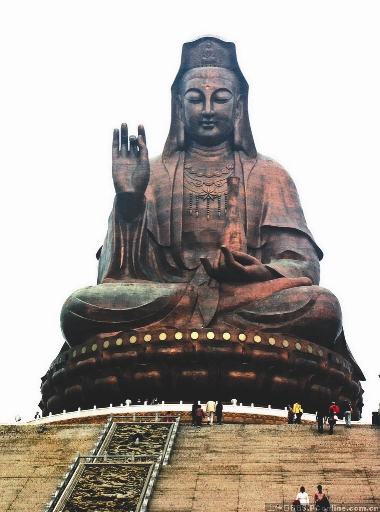
 
 THERE are four well-known mountains in Guangdong: Dinghu, Xiqiao, Danxia and Luofu. For those fed up with weeks of humid and stuffy weather, a getaway to one of these destinations is recommended to recharge the batteries. Dinghu Mountain Dinghu Mountain in Zhaoqing City is known as the green gem of the Tropic of Cancer and Dinghu Mountain National Nature Reserve was the first nature reserve in China, established in 1956. Its peaks rise above ancient towering trees, waterfalls, fresh air, a variety of birds and colorful flowers. Since ancient times, it has been a tourist attraction and sacred to Buddhists. Its shrines attract up to 1 million visitors a year. Qingyun Temple, built in 1633, is one of the four renowned temples in South China. The natural forests of the region are of high scientific and research value. In 1979, Dinghu Mountain National Nature Reserve was included in the International Man and Biosphere Reserve Network of UNESCO as a global conservation area for research of the ecosystems in tropical and subtropical forests. Dinghu Mountain is regarded as a living natural museum and a green treasure house. It is home to more than 500 species of plants, including 23 rare species in imminent danger and under State protection. Over the course of 400 years, evergreen broad-leaf forests in the south subtropical zone have been well protected. It is also home to a variety of wildlife, including 178 species of birds and 38 species of animals, 15 of which are under State protection. Transport: Buses depart for Zhaoqing from most city bus stations and then take a bus to Dinghu Mountain. Accommodation: There is a wide selection of hotels in Zhaoqing and hostels near the scenic spots. Cuisine: For those who want to try farm produce or wild vegetables and animals, there is a food street inside the Seven Star Crags. There are also a number of eateries on Jiangbin Road, Xijiang Road and Qianjin Road offering a wide variety of seafood and freshwater fish. In Fengkai, chicken, freshwater fish and mutton are recommended. Xiqiao Mountain Xiqiao Mountain is in Nanhai District, Foshan City in southern Guangdong. It is a State-level scenic spot and a national forest park. The mountain is an ancient extinct volcano with an amazing landscape: grotesque cliffs, mysterious hollows, spectacular waterfalls and limpid lakes. It has 72 peaks and 36 serene hollows. It is also known for beautiful flowers that perfume the air with their fragrance. It is well-known for unusual scenery with strange rock formations and a profusion of fresh water springs, as well as 42 natural caves. There are 232 springs and 28 waterfalls, including the Yunyafei Waterfall, one of the Eight Scenic Sites of Guangzhou during the Qing Dynasty (1644 –1911). Today, Xiqiao Mountain has 10 major scenic areas including the Nanhai Guanyin Culture Park, where there is a 66-meter statue of Guanyin and the Baiyun Caves. Among other attractions are White Cloud Hollow, Jasper Hollow, Green Rock, Guanyin of the South China Sea Cultural Garden, Yellow Immortal Holy Garden and Wushu Hall, as well as Huang Feihong’s Lion Skill. In ancient dynasties, scholars set up academies of classical learning on Xiqiao Mountain. There are four major academies on the mountain, Yungu, Dake, Shiquan and Sifeng Academy. Favored for a soothing eco-environment and advantageous geological location, Xiqiao Mountain is regarded as the backyard garden of the Pearl River Delta region. Transport: Buses depart for Foshan from most city bus stations and then take a bus to Xiqiao Mountain. Accommodation: There is a wide selection of hotels in Foshan, or stay with the locals near Xiqiao Mountain. Cuisine: A must-have in Foshan is the double-skin milk, a popular dessert there. Manggong cake, sliced frogs, dishes made with Zhuhou ketchup and goose feet with orange peel are also recommended. | 
